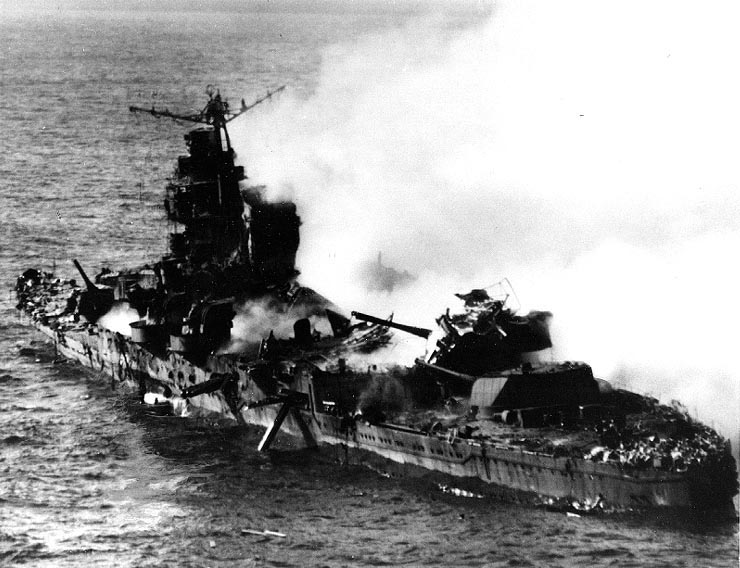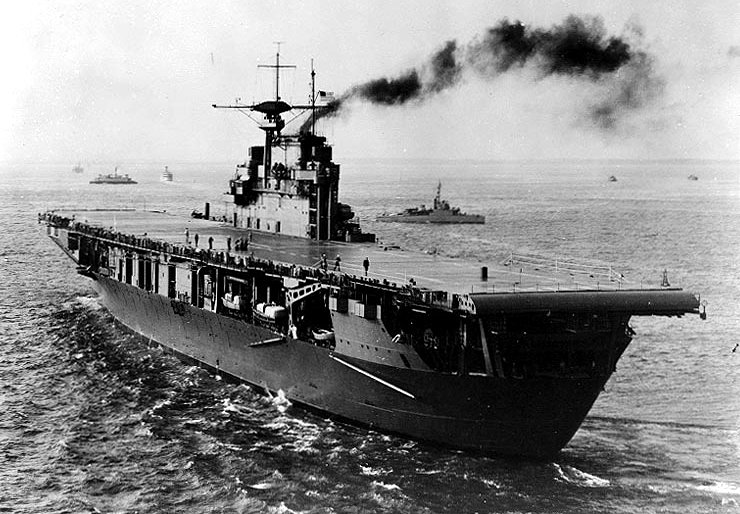Military history is dealing mostly with the causes which led to the victory of one of the combatants and not the other, the preconditions that favored the conduct of the conflict or the benefits, be they of a tactical or technological nature. Only a few battles offers the possibility for military history to explain victories when it seemed impossible. The Battle of Midway is one of those victories and we will present it in full.
On May 5th, 1942, the Imperial General Headquarters released Order 18, which provided for an attack on the Aleutian Islands and an invasion of the Midway Islands. The attack on the Aleutians was a diversion in order to attract some of the US forces there, distracting them from the primary objective of their imperial fleet, which was Midway. On May 20, Admiral Yamamoto sent a directive to his superiors explaining in detail the way the operation took place.
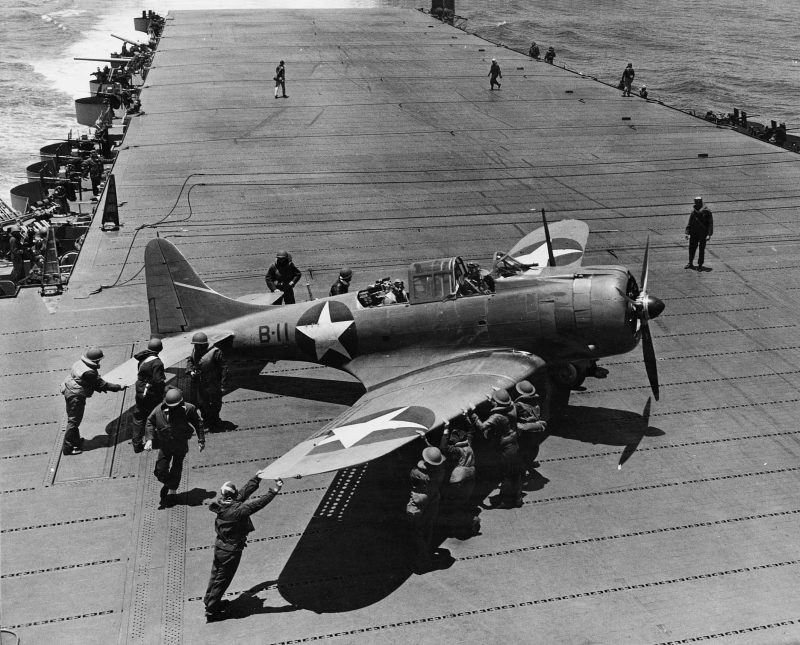
In order to succeed, Yamamoto’s plan involved a series of rapid and highly coordinated attacks. From Ominato, in northern Japan, two naval forces would leave and attack the islands of Attu and Kiska, but also the American base at Dutch Harbor. Two other naval forces were to leave Hashirajima, in southern Japan, to attack the Midway Islands in the northwestrn Pacific. One would be led by Admiral Nagumo Chuici the Japanese hero from Pearl Harbor, and the other one by Nobutake Kondo. In addition, the troops that were going to invade Midway were to be transported from bases situated in Guam and Saipan. After the attack on the Aleutians, the next day Admiral Nagumo’s attack on the Midway Islands had to take place. On the third day the invasion was expected. Meanwhile, Yamamoto had stayed behind with an large force in order to hit the American ships once they would make an appearance to defend Midway.
The American Fleet manages, through its intelligence service, known as the Combat Intelligence Unit, to intercept the messages sent by Yamamoto to his superiors and by those under his command. Using the latest technology from IBM, the Combat Intelligence Unit, a service under the command of Lieutenant Joseph Rochefort, manages to break the Japanese code, JN25, and although they do not get all the details on the exact plans regarding the invasion, it was certain to them that the target is Midway. They managed to decipher the exact details of the attack on the Aleutian Islands and on the Midway Islands.
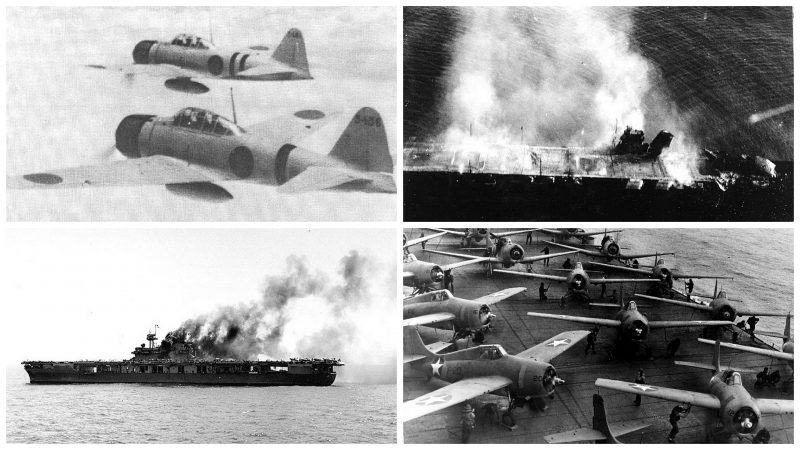
The Japanese forces used for the attack on the Midway Island were composed by a submarine patrol party aligned on three corridors, in order to counter the US fleet movements, an invasion force of 50 000 soldiers, four aircraft carriers, carrying 250 planes and the main fleet, under the command of Yamamoto. Kido Butai (freely translated represents the term Mobile Force, but has a meaning closer to Striking Force), the Japanese fleet, was now the most powerful naval force in the world. On the other side, US Navy was still feeling the shock represented by the attack on Pearl Harbor.
Even if he knew the Japanese plan in detail, the supreme commander of the US Fleet, Admiral Chester Nimitz, was in an extremely delicate situation, given that he was outnumbered. To reduce this numeric difference he urgently called the American ships from the Coral Sea, under the command of Frank Jack Fletcher, and from the Solomon Islands, under the command of William F. Halsey. He also took measures to prepare the ground defenses of the two islands, Eastern and Sand, to withstand the Japanese invasion.
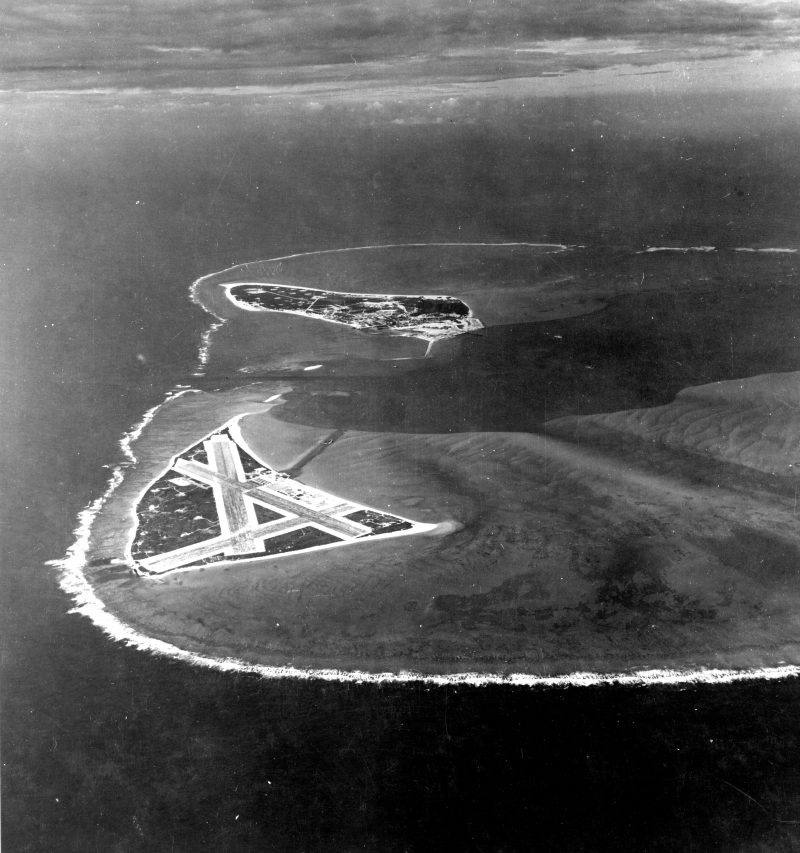
The Americans plan was to position their three aircraft carriers at approx 400 km east of Midway, having a slight superiority in terms of aircraft numbers. They had to wait for the right moment to hit the Japanese ships. Without air support, the Japanese fleet would have been an easy target for the American aircraft.
Meanwhile, the Japanese fleet was moving forward without knowing anything about the position and the strategy of the opponent. Yamamoto’s plan stipulated that the submarines would intercept the US Navy movements, but they could not be ready in time for the operation, so he stopped using them. But Nagumo was not aware of this detail because the Japanese decided to stop any radio communication during battle not to allow the Americans to locate their position.
On the morning of June 4th an air attack, consisting of 108 airplanes struck Midway. The attack caused a lot of damage on the US military installations on Midway, but a new airstrike was ordered . Soon, there appeared on the horizon several US warplanes which led the Japanese fleet to make a tactical move, by heading northeast. Of the 42 American planes attacking the Japanese fleet, 35 were shot down. At that time Japan’s victory seemed certain.
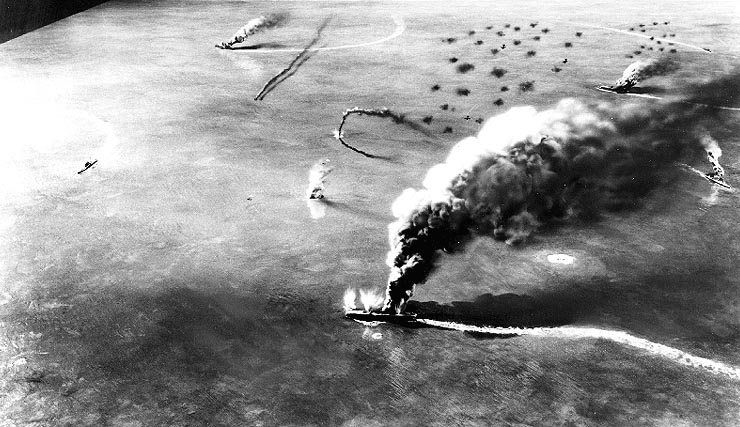
However, after just two minutes, 37 other American aircraft, that took off from the deck of the aircraft carrier Enterprise, descended from high altitude surprising the Japanese so did not have time to counter the attack. Three of the four Japanese aircraft carriers (Akagi, Kaga and Soryu) were hit and soon ablaze, all three had to be abandoned later. Hiryu was the only aircraft carrier still capable of supporting a counteroffensive.
Admiral Tamon Yamaguchi, in command of the Hiryu, gives immediate orders to his planes to attack the US aircraft carriers. 18 planes under the command of the veteran Lieutenant Michio Kobayashi, flew towards the aircraft carrier Yorktown.
Aboard Yorktown, Admiral Fletcher received news that three Japanese carriers were sunk, as his planes were returning from the mission. Around noon, the radar had detected the approaching Japanese squadrons. With some planes still in the air, the US forces manage to destroy almost half of Kobayashi’s planes, but the rest continued to attack the aircraft carrier. Fletcher desperately tried to maneuver the carrier to avoid the incoming bombs, but the ship received several hits.
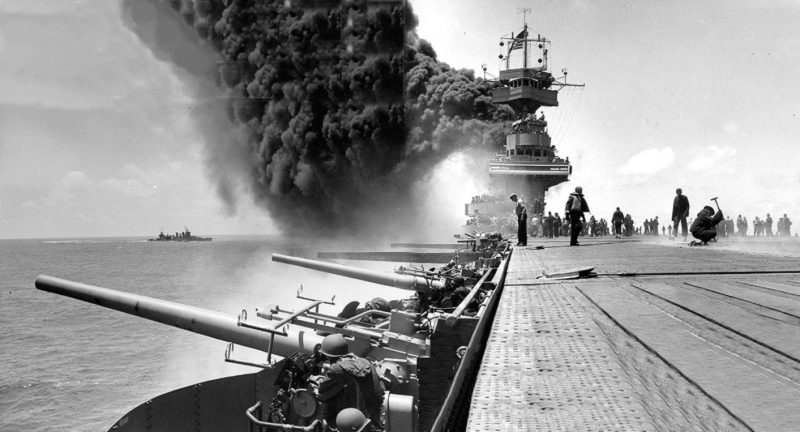
In a desperate final attempt, Yamaguchi orderes the attack to continue, even after he realized that he also has to face the force of the other two other US aircraft carriers: Enterprise and Hornet. Under the command of Tomonoga, who led the initial attack on Midway, the Japanese planes manage a powerful strike on the Yorktown, which hit again and sinks.
Admiral Fletcher was determined to destroy the last Japanese aircraft carrier, especially after it sunk his flagship. When Japanese planes fiercely attacked Yorktown, an American patrol was able to determine the position of the last aircraft carrier Hiryu. Amirarul Spruance, commander of the Enterprise and Hornet, had only a few planes ready to take off but launches the strike anyway.
Yamaguchi decided to wait before launching the next attacks, which proved to be a major error, American planes appeared over the Hiryu. Managing to overcome the Japanese anti-aircraft fire, US planes repeatedly hit the ship which eventually sinks. Yamaguchi decided not to abandon ship and went down with it.
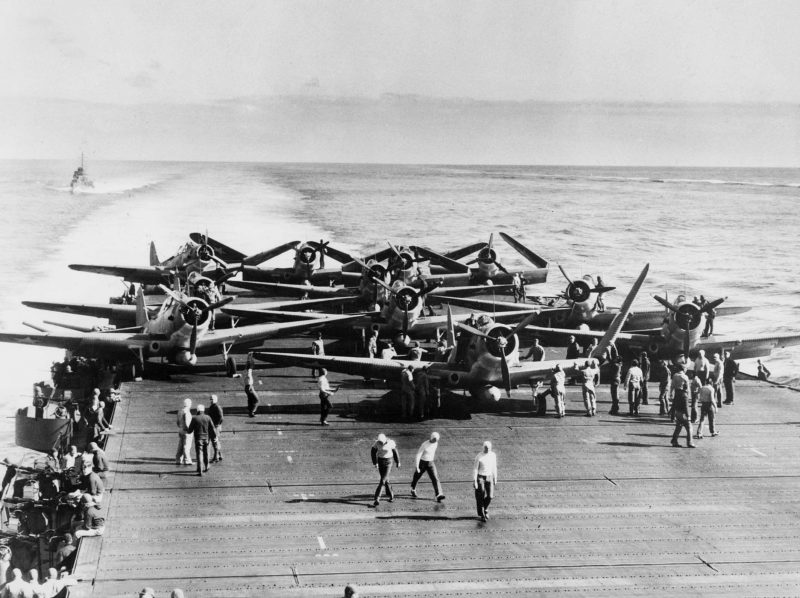
The importance of the Battle of Midway in the outcome of the war in the Pacific still bears debates between historians, being unable to formulate a clear conclusion. One can distinguish two interpretations. The first suggests that Midway is the decisive moment of victory for the United States in the Pacific, while the second believes that Midway is an important victory, but not decisive for the fate of the war.
According to some authors, the American victory at Midway is the most complete naval victory after the Trafalgar and like Horatio Nelson’s victory in 1805, it had significant strategic consequences for the war in progress. However, the importance of victory did not seemed to be obvious to all immediately after the confrontation. For example, on June 6, Roosevelt wrote to Stalin about a fresh victory for the US Navy, but called it indecisive.
